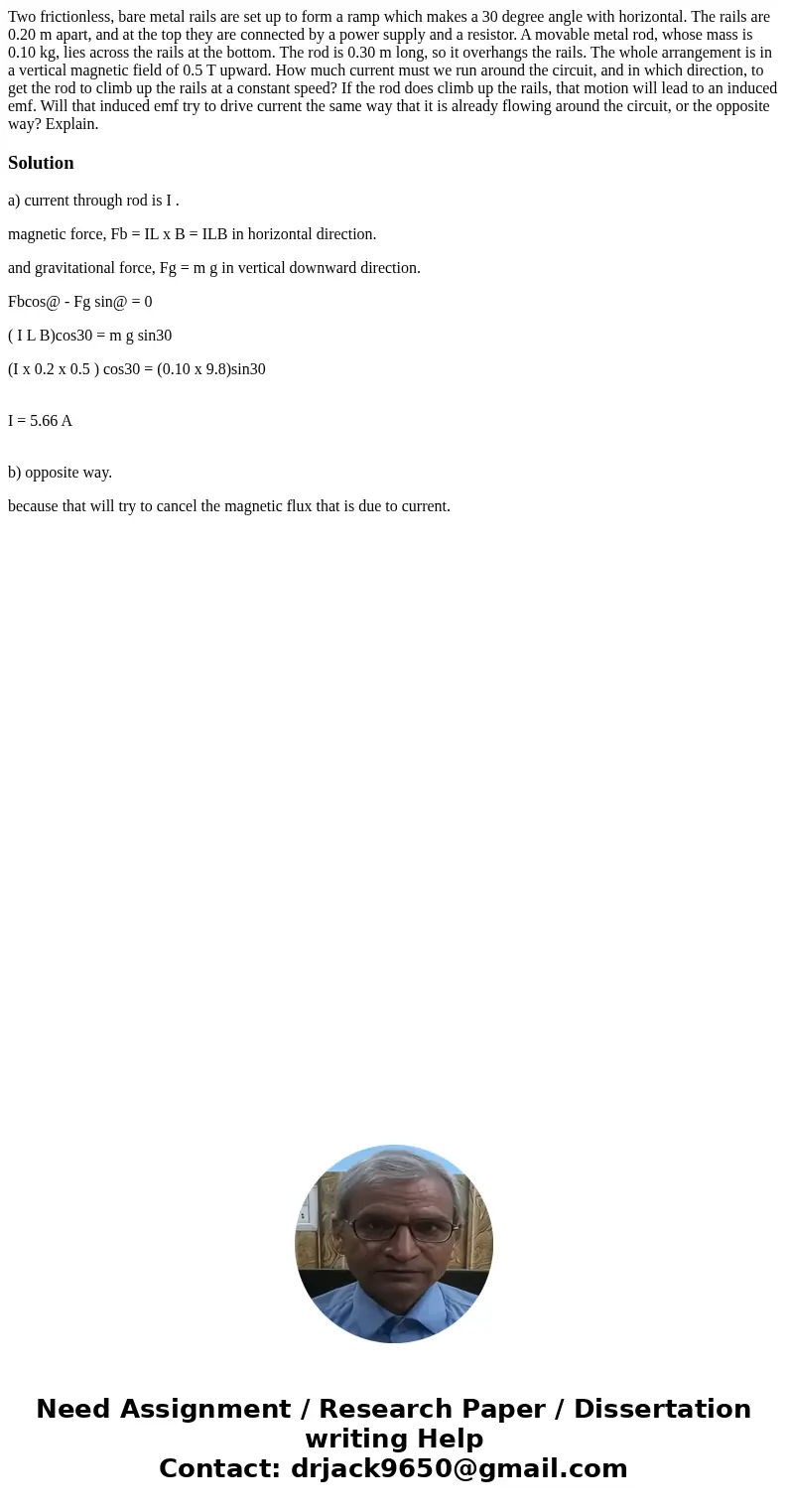Two frictionless bare metal rails are set up to form a ramp
Two frictionless, bare metal rails are set up to form a ramp which makes a 30 degree angle with horizontal. The rails are 0.20 m apart, and at the top they are connected by a power supply and a resistor. A movable metal rod, whose mass is 0.10 kg, lies across the rails at the bottom. The rod is 0.30 m long, so it overhangs the rails. The whole arrangement is in a vertical magnetic field of 0.5 T upward. How much current must we run around the circuit, and in which direction, to get the rod to climb up the rails at a constant speed? If the rod does climb up the rails, that motion will lead to an induced emf. Will that induced emf try to drive current the same way that it is already flowing around the circuit, or the opposite way? Explain.
Solution
a) current through rod is I .
magnetic force, Fb = IL x B = ILB in horizontal direction.
and gravitational force, Fg = m g in vertical downward direction.
Fbcos@ - Fg sin@ = 0
( I L B)cos30 = m g sin30
(I x 0.2 x 0.5 ) cos30 = (0.10 x 9.8)sin30
I = 5.66 A
b) opposite way.
because that will try to cancel the magnetic flux that is due to current.

 Homework Sourse
Homework Sourse